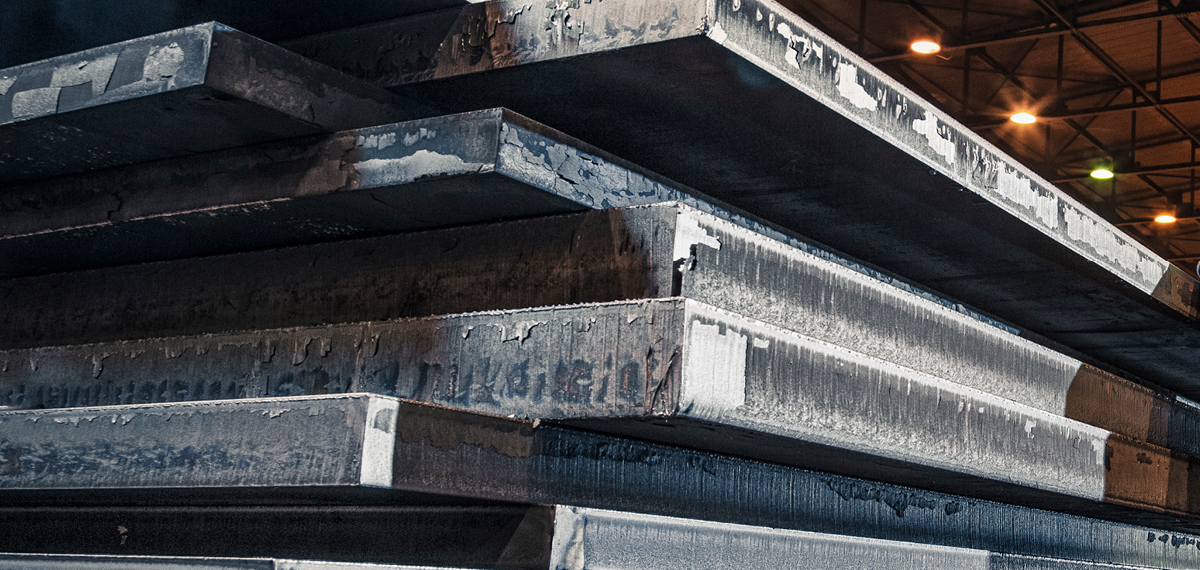The spoon you used stir your coffee, steel. The car you drove to work, steel. The building you sat in and did your work, steel. In fact, steel is the second most mass produced commodity in the world, supporting, according to the World Steel Association, nearly $2.9 trillion dollars of the world’s economy. Steel is used in bridges, subways, and railroads, in skyscrapers and homes, in surgical instruments, knives, and razors. And these uses only scrape the surface of the potentials of steel. But for all you know of the world of products made of steel, how much do you know of how steel happens?
Modern steel is a completely recyclable product that, due to efforts to reduce energy consumption and carbon dioxide output, is considered environmentally friendly and sustainable. It is prized for its tensile strength, durability, hardness, and flexibility. Moreover, steel has a noble past, whose origins stretch back to roughly 1200 BCE, the period we call the Iron Age, when iron ore was mined in Europe and Asia to make tools and weapons.
Early iron production involved blacksmiths who heated iron ore and used hammer and anvil both to remove impurities and to shape the iron into wrought form, hence the term wrought iron. In China, iron was melted in large furnaces and mixed with wood fuel. The resulting liquid was poured into molds or casts, which when cooled became a harder but more brittle substance that we today know as cast iron. Blacksmiths quickly learned that coating wrought iron in charcoal helped to maintain its flexibility while increasing hardness.
It was later in India that iron production became closest to modern steel production. Ironworkers began experimenting with mixtures of iron and carbon to find the perfect ratio of the two elements in making strong but flexible metal. The workers would use clay containers to blend iron with pieces of charcoal. In a high temperature furnace, the iron would melt and absorb some of the carbon from charcoal thus producing the alloy we call steel.
It was in 1856 that modern steel production was born when Sir Henry Bessemer took out a patent on the process, now known by his name, in which oxygen was blown across molten iron to remove impurities. While the Bessemer process is credited to its namesake, there is debate over whether an American, William Kelly, may have simultaneously generated the same idea. Ironically, either man was almost certainly working from a principle that dated back to the 11th century in Asia.
Today’s steel is produced by two methods. The blast furnace method is essentially the Bessemer process. It melts raw iron ore with small bits of steel in a furnace, using a concentrated form of carbon called coke to fuel the process. Pure oxygen is blown across the molten metal to oxidize impurities which evaporate. The high temperatures involved also reduce the carbon content of the alloy down to a level that makes it steel. Modern steel has a carbon level of between .08 and 1.5 percent.
The second method using an electric arc furnace produces two-thirds of today’s steel. With this method, high current electrodes melt scraps of steel into molten form. Then alloys such as chromium and nickel are added to the mix to form an alloy that is called stainless steel. The mixture is purified by adding lime and fluorspar which combine with impurities to become slag, float to the top, and are removed.
We are thus left with that ubiquitous, abundant product that shapes everything from the way we eat to the safety of the places in which we live and work. And thanks to the refinement of its production process, we now have a product that is roughly 1,000 times stronger than the iron from which it is made.
Article courtesy of Happy Writers.

